Getting Started in Livestock: Lessons Learned
 Print This Post
Print This Post
By Linda Coffey, NCAT Livestock Specialist
Thinking back to 1986 and our first farm is a fun thing to do. From then until now, we’ve raised a lot of livestock and have done several types of enterprises—feeder to finish, dairy, eggs, breeding stock, birth to finish. NCAT Southeast Regional Director and Livestock Specialist Margo Hale and I are doing a series on getting started in livestock: see blog posts 41 and 42, and listen to podcast episodes 179 and 182 to read or hear our discussions. We have a lot more to say on the subject. We often joke that episodes might be titled, “What Linda Should Have Done,” and so I offer to you some stories in hopes that I might save you some hard lessons. I’m focusing on our sheep enterprise to keep this post short, and also because we learned the most from our sheep. I believe the lessons will apply to other types of livestock as well, so please read on.

Watching animals graze is very satisfying, especially when they have pastures this nutritious and plentiful.
Learning from Our Farm’s First Year
On our farm in Kansas, we began by purchasing a flock of ewes and a ram. The farm was already fenced for sheep because the previous owner was raising sheep, and so we walked into an ideal situation with fencing, water, and shelter already in place. That saved a great deal of time and expense.
However, we didn’t have enough cash to get all the winter feed supply purchased. So, for the first several years, the local bank and I did business. I took out an operating loan each year, paid it off in full, and then took out another. I quickly realized that we were not going to get ahead by borrowing money each year!
Lessons: Cash flow is critical, and you want to be independent of your banker as quickly as possible.
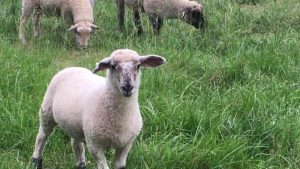
Selecting healthy sheep is key to success.
We started with breeding stock. We bought the ewes and ram from a gentleman who was selling for health reasons. We liked him and we wanted sheep, so we made the deal. But we didn’t ask enough questions. Later we learned that the flock had been sourced from a sale barn. That explained why some ewes didn’t make milk (prior mastitis infection had ruined the udder) and perhaps why some didn’t lamb. I would not have gone to a sale barn to purchase stock because I know that is the very place producers send their non-breeders, cases of chronic footrot, and animals that are not good mothers or that jump fences or burrow under. Also, because some animals with chronic illness may go through the facilities, all animals may be exposed to sickness.
Lessons: Ask good questions, and ask about the flock health history. Examine prospective purchases carefully and bring an experienced person with you who can keep you from making poor choices. Also be willing to cull as necessary.
Our first year was our worst year. We sold the non-breeders and non-milkers. Guess where? The sale barn! Buyer beware. Since then, we buy from a farm and see the whole flock. We mostly buy rams and raise our own ewes, to minimize both exposure to illness and stress. Ewes that are born on the farm are adapted to our weather and plants and can produce well. Because we observe the flock carefully and keep records, we know which ewes are the best. We keep their progeny to build the strongest home-grown flock possible.
Lessons in Diversifying
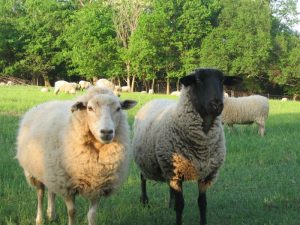
Breed is not as important as the individual characteristics. Both the Suffolk and the Gulf Coast sheep worked well on our farm. Having animals nearly the same size helps with feeding.
Years later, on our current farm in Arkansas, I had the idea to diversify our products by adding sheep with excellent wool to our flock. My reasoning was that we could appeal to hand-spinners and sell fleeces for a profitable price. We bought excellent sheep from a farm that we knew well, and they were healthy. However, this farm was managed differently from ours. These sheep were kept in a lot and fed hay every day of the year because the land base was small. They were well cared for. I assumed the sheep would do well on our farm, too. However, to my surprise, they did not adapt well to grazing and they never merged completely into our flock. Also, they were larger-framed than our sheep, meaning they needed more feed just to maintain themselves. They didn’t graze well and were stressed. When we did supplement feed, we were underfeeding them because we were feeding the right amount for our smaller sheep. This meant the new sheep were undernourished and could not produce as well as they did previously.
Lessons: Buy animals that are already adapted to your kind of management, and that are a similar size so that feeding is simplified.
Continuing Education
Over the years, we have learned other lessons. There might be future blog posts. But for today, I hope my stories help you be smart as you begin a livestock enterprise. In a nutshell:
- Buy from a farm (not a sale barn) and know the animals’ health history.
- Pencil out the enterprise, paying attention to cash flow.
- Be sure your purchases are healthy and able to be productive.
- Buy from a farm that manages the same way you plan to.
- Be sure your animals are thriving on your farm.
We wish you the best of luck, and if you are beginning a livestock enterprise, the resources below will help you be well prepared. Please email askanag@ncat.org or call us at 800-346-9140 if you have questions or just want to discuss your plans.
Related ATTRA Resources:
Small-Scale Livestock Production
Working with Your Meat Processor
Blog 6: Adaptive Grazing: You Can Do It
Bees
Blog 31: Beekeeping Basics: Making Splits
Rabbits
Small-Scale Sustainable Rabbit Production
Poultry
Getting Started in Poultry Course
Processing Poultry Meat for Sale
Explore the Poultry section of ATTRA’s website to see many more resources.
Hogs
Hogs: Pastured or Forested Production
Sheep and Goats
Sheep: Sustainable and Organic Production
Sheep and Goats: Frequently Asked Questions
Explore the Sheep and Goats section of the ATTRA website to learn about goats and sheep, including health care and marketing. Publications, podcasts, and videos are grouped by topic.
Cattle
Business Planning
Other Resources:
Farmer Services — Food Animal Concerns Trust offers webinars, grants, scholarships, and an online community. Don’t miss the nutritional information for grass-fed meat, milk, and eggs, which can be customized for your farm and given to your customers.
Temple Grandin’s Guide to Working with Farm Animals: Safe, Humane Livestock Handling Practices for the Small Farm 2017. Storey Publishing.
Purdue University’s Small Scale Livestock Enterprise. Purdue has developed a business planning tool to help you sort out options: this is a way to look at possible returns for various enterprises. Enterprises include beef cow-calf, dairy steer, sheep, goat, and turkeys.
Photos by Linda Coffey
This blog is produced by the National Center for Appropriate Technology through the ATTRA Sustainable Agriculture program, under a cooperative agreement with USDA Rural Development. ATTRA.NCAT.ORG.

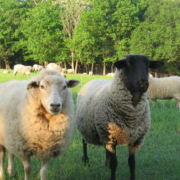
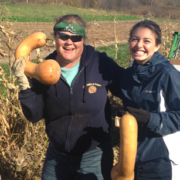
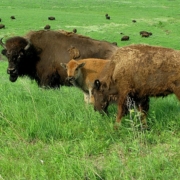

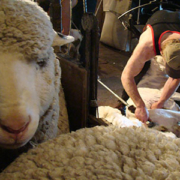
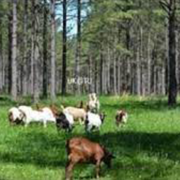
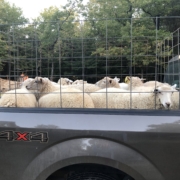
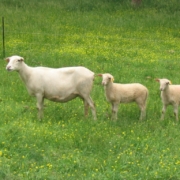
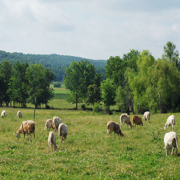

 UCANR
UCANR